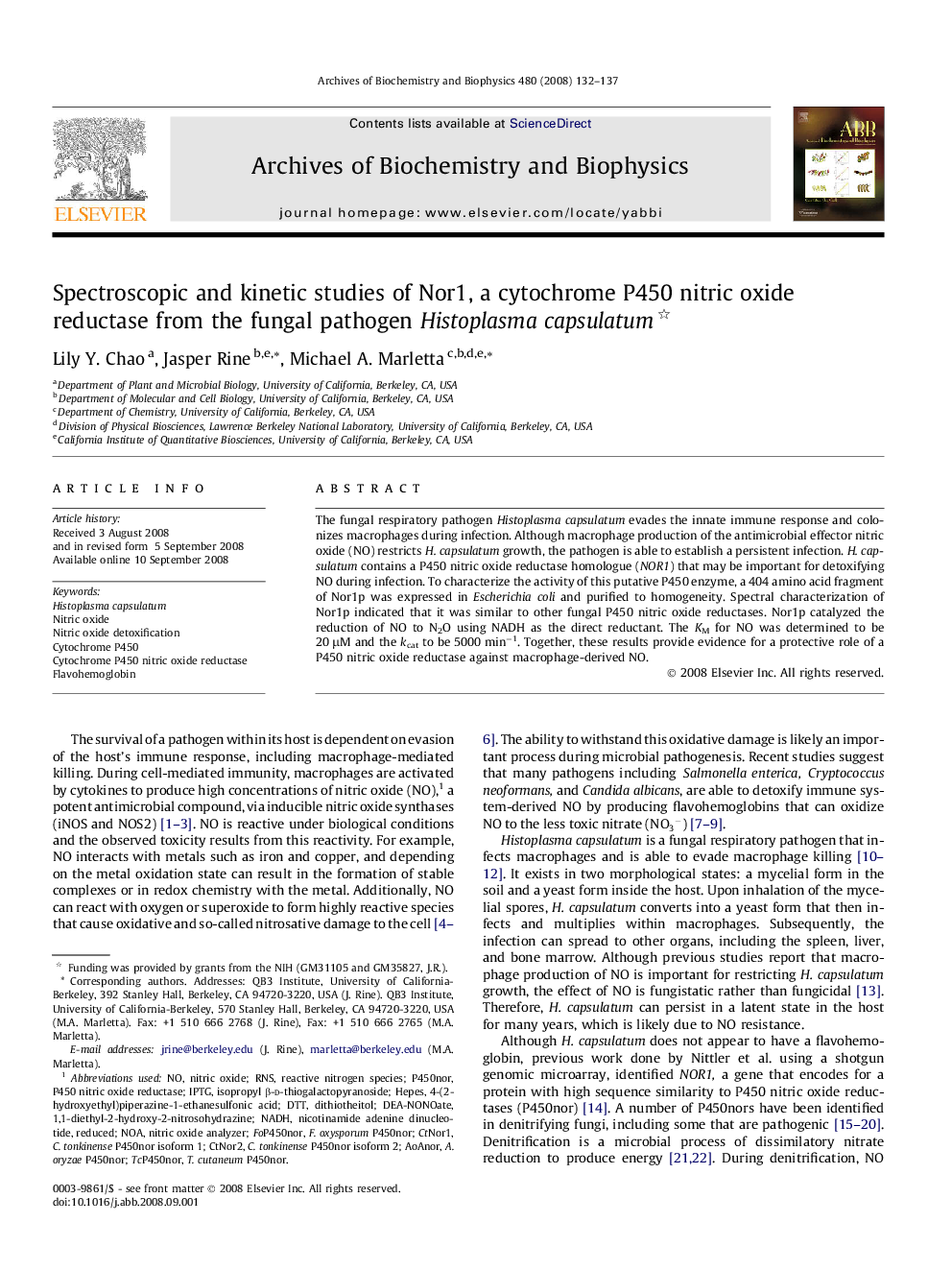| Article ID | Journal | Published Year | Pages | File Type |
|---|---|---|---|---|
| 1926504 | Archives of Biochemistry and Biophysics | 2008 | 6 Pages |
The fungal respiratory pathogen Histoplasma capsulatum evades the innate immune response and colonizes macrophages during infection. Although macrophage production of the antimicrobial effector nitric oxide (NO) restricts H. capsulatum growth, the pathogen is able to establish a persistent infection. H. capsulatum contains a P450 nitric oxide reductase homologue (NOR1) that may be important for detoxifying NO during infection. To characterize the activity of this putative P450 enzyme, a 404 amino acid fragment of Nor1p was expressed in Escherichia coli and purified to homogeneity. Spectral characterization of Nor1p indicated that it was similar to other fungal P450 nitric oxide reductases. Nor1p catalyzed the reduction of NO to N2O using NADH as the direct reductant. The KM for NO was determined to be 20 μM and the kcat to be 5000 min−1. Together, these results provide evidence for a protective role of a P450 nitric oxide reductase against macrophage-derived NO.
